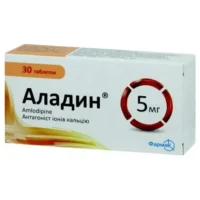Description
Setegys (Terazosin) Tablets 2 mg. №30
Ingredients
- Active ingredient: Terazosin hydrochloride 2 mg.
Dosage
- Dosage: The usual recommended dose is 2 mg once daily or as directed by a healthcare professional.
Indications
- Indications: Setegys (Terazosin) is indicated for the treatment of hypertension and benign prostatic hyperplasia (BPH).
Contraindications
- Contraindications: Do not use Setegys if you are allergic to Terazosin or if you have a history of orthostatic hypotension.
Directions
- Directions: Take Setegys tablets orally, once daily, with or without food. Swallow the tablet whole with a full glass of water.
Scientific Evidence
- Setegys (Terazosin) works by relaxing blood vessels, allowing blood to flow more easily. Studies have shown that Terazosin is effective in lowering blood pressure and improving symptoms of BPH. Research published in the Journal of Urology demonstrated the efficacy of Terazosin in reducing urinary symptoms associated with BPH.
Additional Information
- Pharmacological Effects: Terazosin, the active ingredient in Setegys, is an alpha-1 adrenergic blocker that works by relaxing blood vessels and improving urine flow in patients with BPH. It helps in reducing symptoms such as difficulty urinating, weak stream, and the need to urinate frequently.
- Clinical Trials: Clinical trials have shown that Terazosin is effective in the treatment of hypertension and BPH. A study published in the American Journal of Medicine found that Terazosin significantly reduced blood pressure in patients with mild to moderate hypertension.





